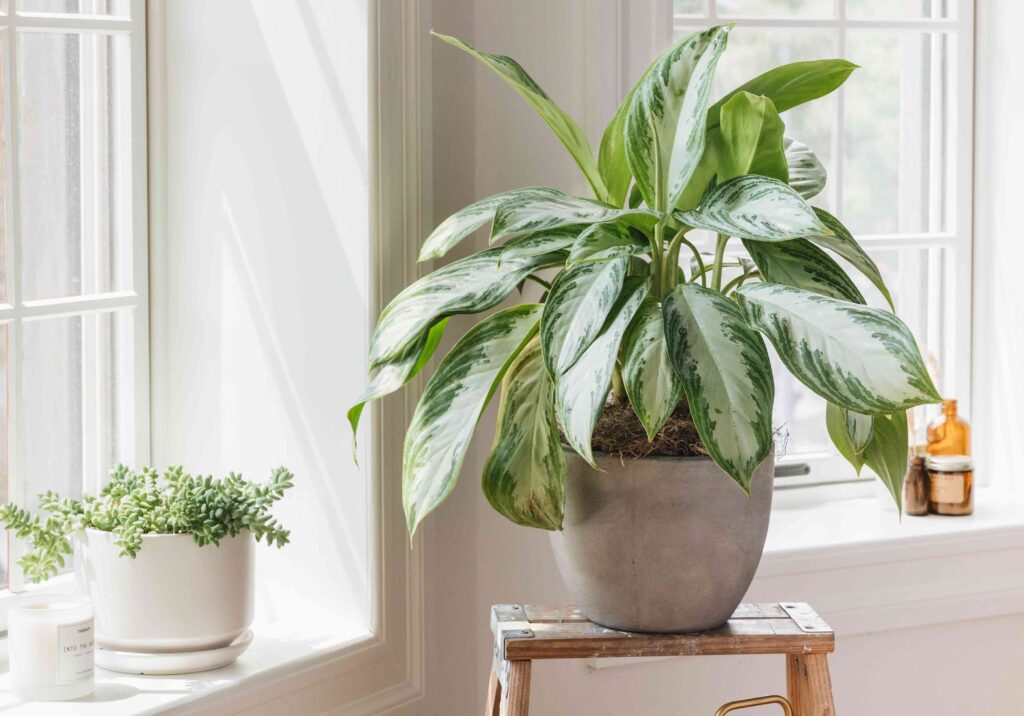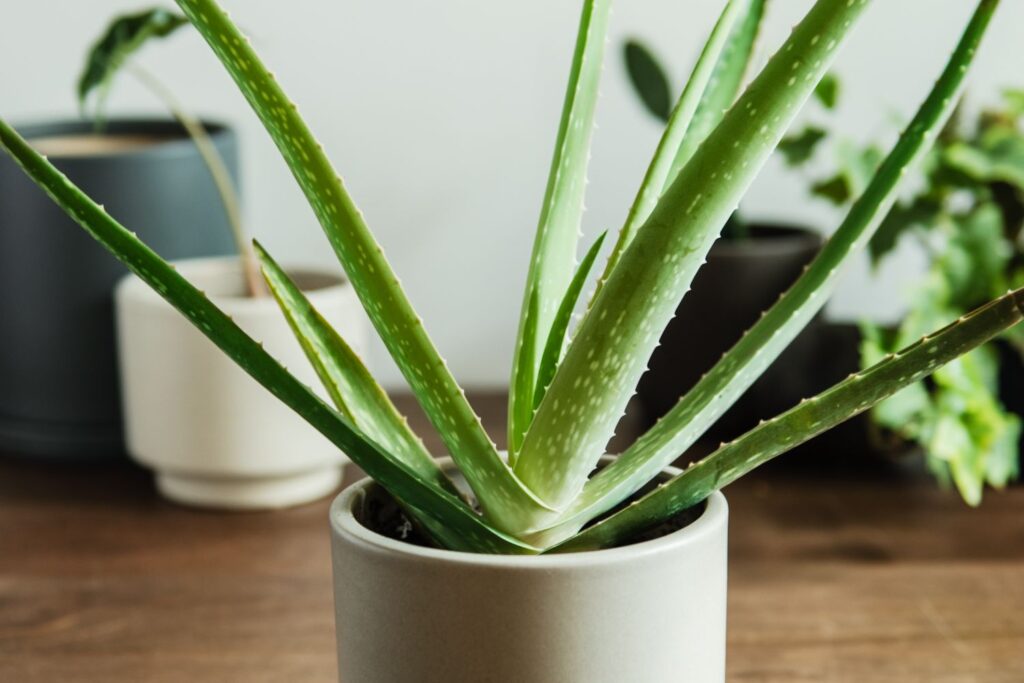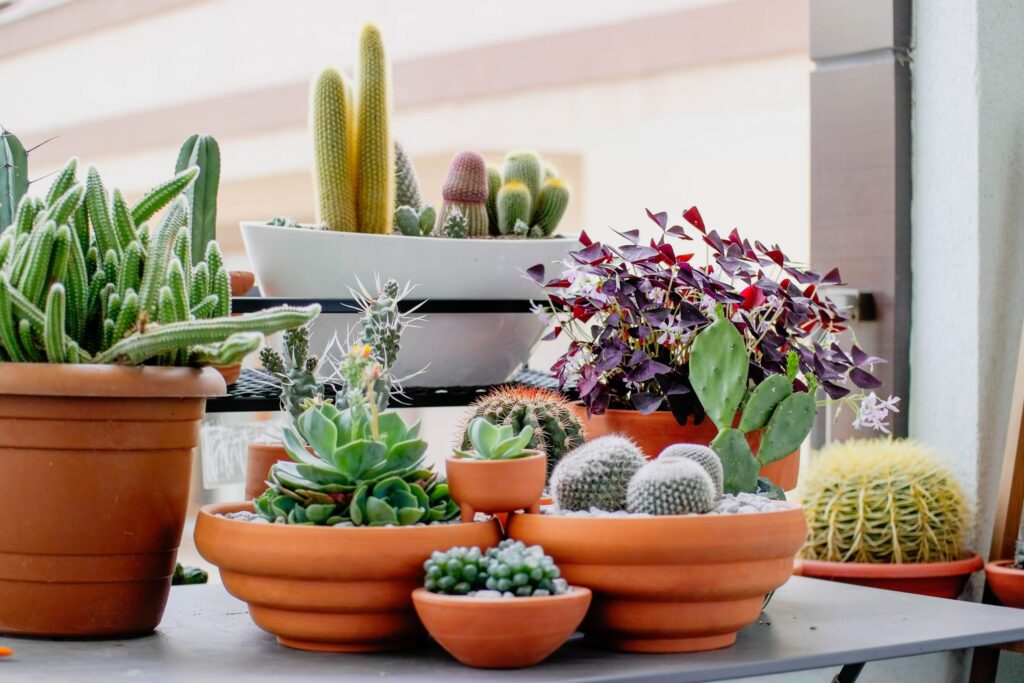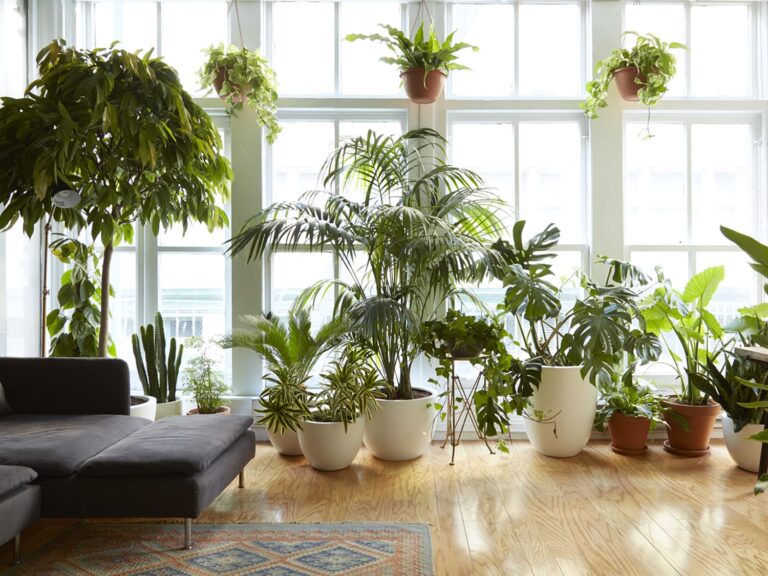Contents
Introduction
If you’re lucky enough to have a sunlit apartment, you know how wonderful it feels to bask in natural light all day. But did you know that this sunny environment can be a game-changer for your indoor plants? If you’re looking to turn your bright, cheerful space into a lush, green oasis, choosing the right plants is key.
Sunlit apartments are blessed with an abundance of natural light, which can make your space feel warm and inviting. However, not all plants are created equal when it comes to soaking up those rays. High-light plants are perfect for these sunny spots because they thrive in bright environments, making them ideal for your sun-filled home.
But what exactly are high-light plants? Simply put, these are plants that love and need lots of sunlight to grow and flourish. Unlike low-light plants that do well in shadier spots, high-light plants have evolved to handle—and even crave—intense light. They’re the ones that will truly shine in your apartment, adding vibrant greenery and a splash of nature to your decor.
In this guide, we’ll explore some of the best high-light plants that can thrive in your sunlit apartment. Whether you’re a seasoned plant enthusiast or just starting your indoor garden journey, you’ll find plenty of options to brighten up your space. We’ll cover everything from easy-to-care-for succulents and cacti to lush tropical plants and fragrant herbs, giving you the lowdown on what each plant needs to stay happy and healthy.
So, get ready to transform your apartment into a green paradise with plants that love the sunshine as much as you do. Let’s dive in and discover the best high-light plants that will make your sunlit space even more spectacular!
Understanding High-Light Conditions
Alright, let’s break down what it means to have high-light conditions in your apartment. If you’re wondering what makes a space perfect for high-light plants, you’re in the right place!
So, what exactly is high-light? In plant lingo, high-light conditions refer to areas where plants get plenty of bright, direct sunlight. Imagine a sunny windowsill or a spot that soaks up rays all day long—that’s where high-light plants thrive. This kind of light is usually intense and direct, which is perfect for plants that love soaking up the sun.
Here’s a quick peek into how sunlight affects your plants. Plants are pretty much solar-powered. They use sunlight to photosynthesize, which means they turn light into the energy they need to grow. The more light they get, the happier and healthier they are. But it’s not just about the amount of light; the quality and duration matter too. Plants in high-light conditions often get several hours of direct sunlight daily, which boosts their growth and vibrancy.
Now, let’s chat about the difference between direct and indirect light. Direct light is when sunlight hits the plant straight on, like through a south-facing window. Indirect light, on the other hand, is when the light is filtered or bounced off walls or curtains before reaching the plant. High-light plants can handle both types, but they generally prefer that full, unfiltered sunlight.
Understanding these basics will help you make the best choices for your green buddies. If you’ve got a sunny spot in your apartment, you’re in luck—your plants will love it! With the right high-light plants and a bit of know-how, you can turn your sunlit apartment into a thriving garden haven.
Characteristics of High-Light Plants
Alright, let’s dive into what makes high-light plants so special and why they’re perfect for your sunny apartment. If you’re ready to discover the traits that help these green beauties thrive in bright spaces, you’re in for a treat!

First up, let’s talk about adaptability. High-light plants are like sun-loving champions. They’ve evolved to handle and even thrive in bright environments. These plants have unique characteristics that make them perfect for sunny spots. For example, they often have thicker leaves or waxy surfaces. These features help them absorb and manage all that sunlight without getting scorched. Imagine them as the sunbathers of the plant world, soaking up rays without a problem!
Another thing to look out for is water storage. Many high-light plants are designed to handle dry spells because their bright environments can sometimes mean less humidity. Think about succulents and cacti—they’ve got special adaptations like fleshy leaves or stems that store water. This helps them stay hydrated even if you forget to water them occasionally (though they still need a bit of care!).
You might also notice that high-light plants often have vibrant, glossy leaves. These features help them reflect some of that intense sunlight, which protects them from getting too much of a good thing. So, when you see a plant with shiny, thick leaves, you’re probably looking at a high-light lover!
In summary, high-light plants are specially equipped to enjoy and make the most of bright, sunny conditions. Their unique adaptations make them ideal for sun-drenched spots in your apartment, where they can thrive and add a splash of green to your space. With these plants in your home, you’ll get to enjoy their beauty and resilience every day!
Top High-Light Plants for Sunlit Apartments
Now that you’ve got a handle on what makes high-light plants tick, let’s dive into the fun part: picking the best ones for your sunlit apartment! With so many options out there, it can be a bit overwhelming. Don’t worry, though—we’ve got you covered with some fantastic choices that’ll make your space feel like a lush paradise.
Succulents and Cacti
Aloe Vera
Aloe Vera is like the superhero of indoor plants. Not only is it low-maintenance, but it also has air-purifying powers. It loves bright, indirect light and doesn’t need much watering—perfect if you’re a bit forgetful about plant care. Plus, it has those cool, fleshy leaves that look great in any setting!

Jade Plant (Crassula ovata)
The Jade Plant is a classic choice for bright spaces. Its thick, shiny leaves give it a lush, green look that can add a touch of elegance to your decor. It prefers bright, direct light and needs very little watering. Just make sure it has a well-draining pot to keep its roots happy.
Echeveria
If you’re into unique shapes and vibrant colors, Echeveria is your go-to. These rosette-shaped succulents come in various hues and look amazing in sunny spots. They thrive in full sun and need well-draining soil. They’re also pretty low-maintenance, which is always a plus!

Tropical Plants
Bird of Paradise (Strelitzia reginae)
The Bird of Paradise is like bringing a bit of the tropics into your home. With its dramatic, banana-like leaves, it’s sure to make a statement. It loves bright, indirect light and will appreciate regular watering to keep its soil moist. It’s a bit of a showstopper, and it loves soaking up those sunbeams!
Rubber Plant (Ficus elastica)
Rubber Plants are hardy and stylish. Their glossy leaves can brighten up any room, and they’re great for adding a bit of greenery to your decor. They prefer bright, indirect light and need consistent moisture, but they’re quite forgiving if you miss a watering now and then.
Ferns
Boston Fern (Nephrolepis exaltata)
Boston Ferns are perfect if you love a lush, feathery look. They thrive in bright, indirect light and love high humidity. If you have a sunny bathroom or kitchen, this fern could be a great fit. Just keep the humidity levels up and mist it regularly for the best results.
Bird’s Nest Fern (Asplenium nidus)
With its unique, wavy leaves, the Bird’s Nest Fern adds a touch of tropical flair. It does well in bright, indirect light and prefers to be kept humid. Regular misting will keep its leaves looking fresh and vibrant.
Herbs and Edibles
Basil
Basil isn’t just for cooking—though it’s fantastic for that! This herb thrives in sunny spots and loves plenty of light. It’s perfect for adding a touch of green to your kitchen and provides fresh leaves for your favorite dishes. Keep it in a sunny spot and give it regular harvests to keep it growing strong.
Mint
Mint is a fragrant, versatile plant that’s great for both culinary and medicinal uses. It thrives in bright, direct light and can be a refreshing addition to your home. Plus, it’s easy to grow and maintain, making it a great choice for sunny spots.
Plant Care Tips for Sunlit Apartments
Alright, you’ve got your high-light plants and they’re all set up in their sunny spots. But to keep them looking their best and growing strong, you’ll need a few handy care tips. Don’t worry, keeping these plants happy is easier than you might think!
Watering Practices
Let’s start with watering. High-light plants generally need regular watering, but how much depends on the type of plant and your home’s conditions. Here’s a simple rule of thumb: if your plant’s soil feels dry a couple of inches down, it’s time to water. Overwatering is a common mistake, so make sure you let the soil dry out a bit between waterings to avoid root rot.
If you’re unsure, it’s better to err on the side of under-watering rather than overdoing it. Plants in bright light can dry out faster, but they usually bounce back well with a bit of water. Pay attention to your plant’s needs, and you’ll get the hang of it in no time!
Soil and Potting
Next up, soil and potting. High-light plants often do best in well-draining soil that allows excess water to escape easily. Look for potting mixes labeled for cacti and succulents, or make your own mix with equal parts potting soil, sand, and perlite. For tropical plants, a mix that retains a bit more moisture, like one with peat moss, works great.
Choosing the right pot is just as important. Make sure it has drainage holes to prevent water from sitting at the bottom, which can lead to root rot. A good pot with drainage helps keep your plants’ roots healthy and happy.
Fertilization
When it comes to feeding your plants, a little goes a long way. High-light plants generally benefit from regular feeding during their growing season, which is usually spring and summer. Use a balanced, all-purpose fertilizer or one specifically formulated for the type of plant you have. Follow the instructions on the label, and avoid over-fertilizing, as too much can harm your plants.
Feeding once a month or even every couple of months should be plenty to keep your plants thriving. If you notice any signs of nutrient deficiency, like yellowing leaves, you can adjust your fertilization routine accordingly.
Common Challenges and Solutions
Even with the best care, sometimes your high-light plants might run into a few hiccups. Don’t worry—every plant enthusiast faces challenges now and then! Here are some common issues you might encounter and how to tackle them so your plants stay happy and healthy.
Overexposure to Sunlight
One of the most common problems with sun-loving plants is overexposure to sunlight. While high-light plants need a lot of light, too much direct sunlight can actually cause sunburn. You might notice leaves turning brown or getting crispy edges. It’s a sign that your plant is getting more sun than it can handle.
To fix this, try moving your plant to a spot with bright, indirect light instead of direct sun. You can also use sheer curtains or blinds to filter the light coming through your windows. Your plant will still get the brightness it loves but without the harsh rays that can cause damage.
Pests and Diseases
Pests and diseases can be a nuisance, but they’re not impossible to manage. Common pests for high-light plants include spider mites, aphids, and mealybugs. If you see tiny bugs or sticky residue on your plants, it’s time for some action.
To tackle pests, start with a gentle wash using water and mild soap to clean the leaves. For more stubborn pests, consider using neem oil or insecticidal soap. Regularly inspecting your plants and keeping the area clean can help prevent infestations.
Diseases like mold or mildew might pop up if your plant’s environment is too humid or if there’s poor air circulation. To combat this, make sure your plant has good airflow around it and avoid letting water sit on the leaves. If you notice mold or mildew, remove the affected parts and adjust your care routine to keep things dry and breezy.
Temperature Fluctuations
High-light plants generally prefer stable temperatures. Extreme changes, like sudden drafts or heatwaves, can stress your plants out. If you’re dealing with temperature fluctuations, try to place your plants away from drafty windows, air conditioners, or heaters.
Keeping your apartment at a steady, comfortable temperature will help your plants feel right at home. Most high-light plants do well in average room temperatures, so aim for a range that’s comfortable for you.
Decorating with High-Light Plants
So, you’ve got your high-light plants thriving in your sunlit apartment—now what? It’s time to think about how to show them off and make the most of their beauty. Decorating with plants can really elevate your space and add a touch of nature to your home. Let’s dive into some fun and easy ways to integrate your green friends into your decor!
Creating a Plant Display
One of the simplest ways to make a statement with your high-light plants is by creating a dedicated plant display. Think of it as setting up a mini indoor garden. You can use shelves, plant stands, or even hanging planters to showcase your plants at different heights. This not only adds visual interest but also makes it easier to fit multiple plants into your space.
For a cohesive look, group plants with similar needs together. For instance, succulents and cacti can be grouped on a sunny windowsill, while tropical plants might do well on a stand in a bright corner. Don’t be afraid to mix and match different types and sizes to create a dynamic display.
Combining Plants with Interior Design
Integrating plants into your existing interior design can be a game-changer for your decor. Think about how the colors and textures of your plants can complement your furniture and walls. For example, a large Bird of Paradise can become a focal point in a neutral-toned room, while colorful Echeveria can add a pop of color to a minimalist space.
Use planters and pots that match your decor style. Sleek, modern pots can enhance a contemporary look, while rustic, textured pots can add charm to a cozy, farmhouse-style room. You can also play with plant arrangements to fit different areas—place a tall plant next to a couch to create a lush backdrop or hang small plants from the ceiling to add greenery at eye level.
Adding Plants to Different Rooms
Think beyond the living room—plants can brighten up any room in your apartment! In the kitchen, fresh herbs like basil and mint can be both practical and decorative. In the bathroom, ferns and other humidity-loving plants thrive in the steam of a hot shower.
Even bedrooms can benefit from a touch of greenery. Low-maintenance plants like Aloe Vera or Rubber Plant can make a bedroom feel more serene and relaxing. Just be sure to place them in spots where they’ll get enough light to stay healthy and vibrant.
Conclusion
So there you have it! With the right high-light plants, your sunlit apartment can turn into a vibrant, green haven. Whether you’re a seasoned plant lover or just starting out, adding these sun-loving beauties to your space can really brighten things up and make your home feel even more inviting.
To recap, high-light plants are perfect for those sunny spots in your apartment. They thrive in bright conditions and can bring a splash of greenery and life to any room. From easy-to-care-for succulents and colorful Echeveria to dramatic tropical plants and fresh herbs, there’s a high-light plant for every corner of your home.
Remember, keeping your plants happy is all about understanding their needs. Make sure they get the right amount of light, water them appropriately, and choose the right soil and pots. With a little care, you’ll enjoy lush, thriving plants that add beauty and a touch of nature to your living space.
Don’t be afraid to experiment and mix different plants to see what works best for your apartment. Each plant has its own unique charm and character, so have fun creating your own indoor garden paradise.
So go ahead, let the sunshine in, and enjoy the wonderful world of high-light plants in your sunlit apartment. Your green space is waiting to bloom!



